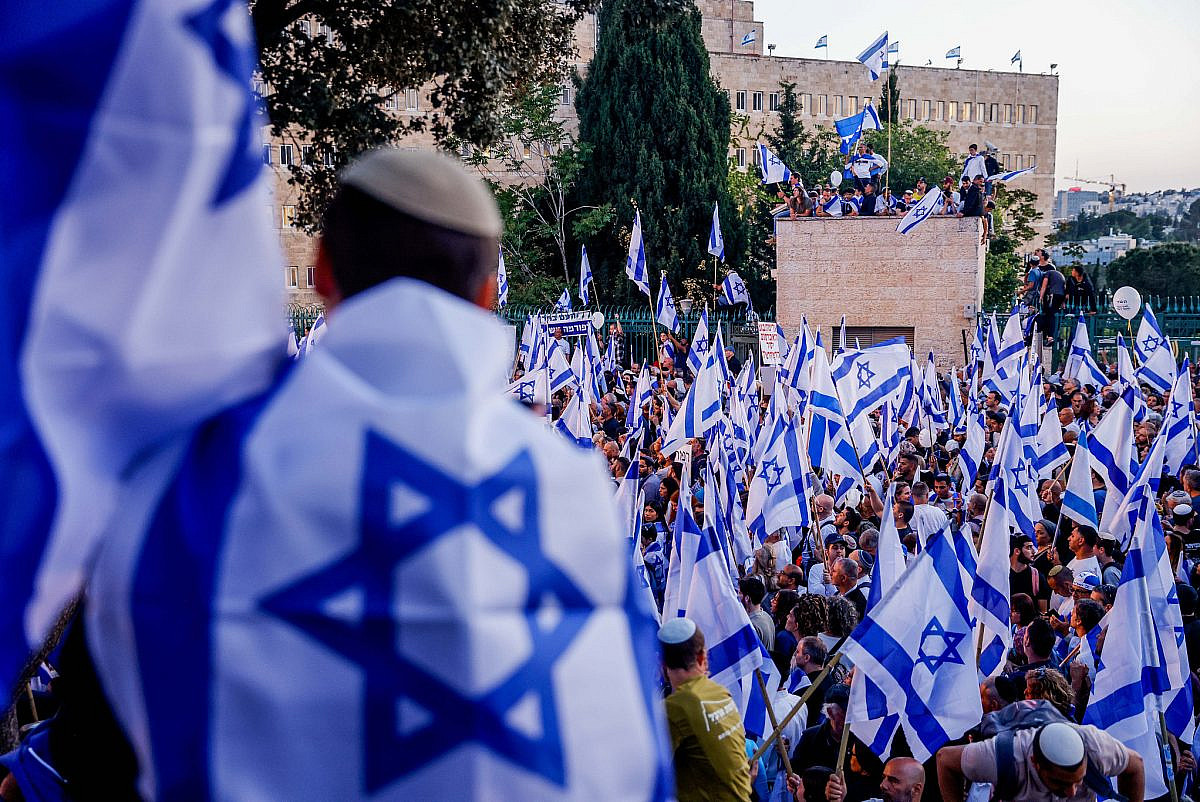It now seems strange to consider the fact that, in the run-up to the last Israeli election, Benjamin Netanyahu and his Likud party did not give much thought to the judicial overhaul currently ripping the country apart. In fact, the party did not campaign on the reform, and the prime minister hardly mentioned it in the first government meeting after the election.
That the gradual dissolution of the judicial system would become Netanyahu’s last-ditch effort to avoid potential prison time for his corruption scandals is now well-known. But the real engine behind the overhaul was never Likud — it was and remains the flagship project of the national-religious sector, and the focus of the Religious Zionist Party’s agenda, which seeks to “restart the legal system.”
In the days leading up to the election, RZP head Bezalel Smotrich and the Knesset’s Constitution, Law, and Justice Committee chair Simcha Rothman laid out nearly every single clause of what would become the reform as presented by Justice Minister Yariv Levin. The pair were extremely frank about annulling the reasonableness clause, politicizing the government’s legal advisers, subordinating the committee for the appointment of judges to the whims of politicians, and of course the override clause.
Smotrich and Rothman did not bother to hide the racist, supremacist motives behind their proposed reforms. Through the override clause, which would allow the Knesset to overturn any decision handed down by the Supreme Court by a simple majority, the government will be able to, per their program, “return the infiltrators [that is, African asylum seekers] to their countries of origin using the ‘natural selection’ method [it is not explained what is meant by this biological phrase]; enact the conscription law [to exempt Haredim from army service]; re-enact the regularization law that will correct a long-standing injustice and make it possible to formalize Israeli settlements in Judea and Samaria, which were established in good faith and with government involvement on private [Palestinian] land, while providing fair compensation to those who prove rights to that land; enact a state conversion law that will prevent [Jewish] assimilation and the undermining immigration policy, and more.”
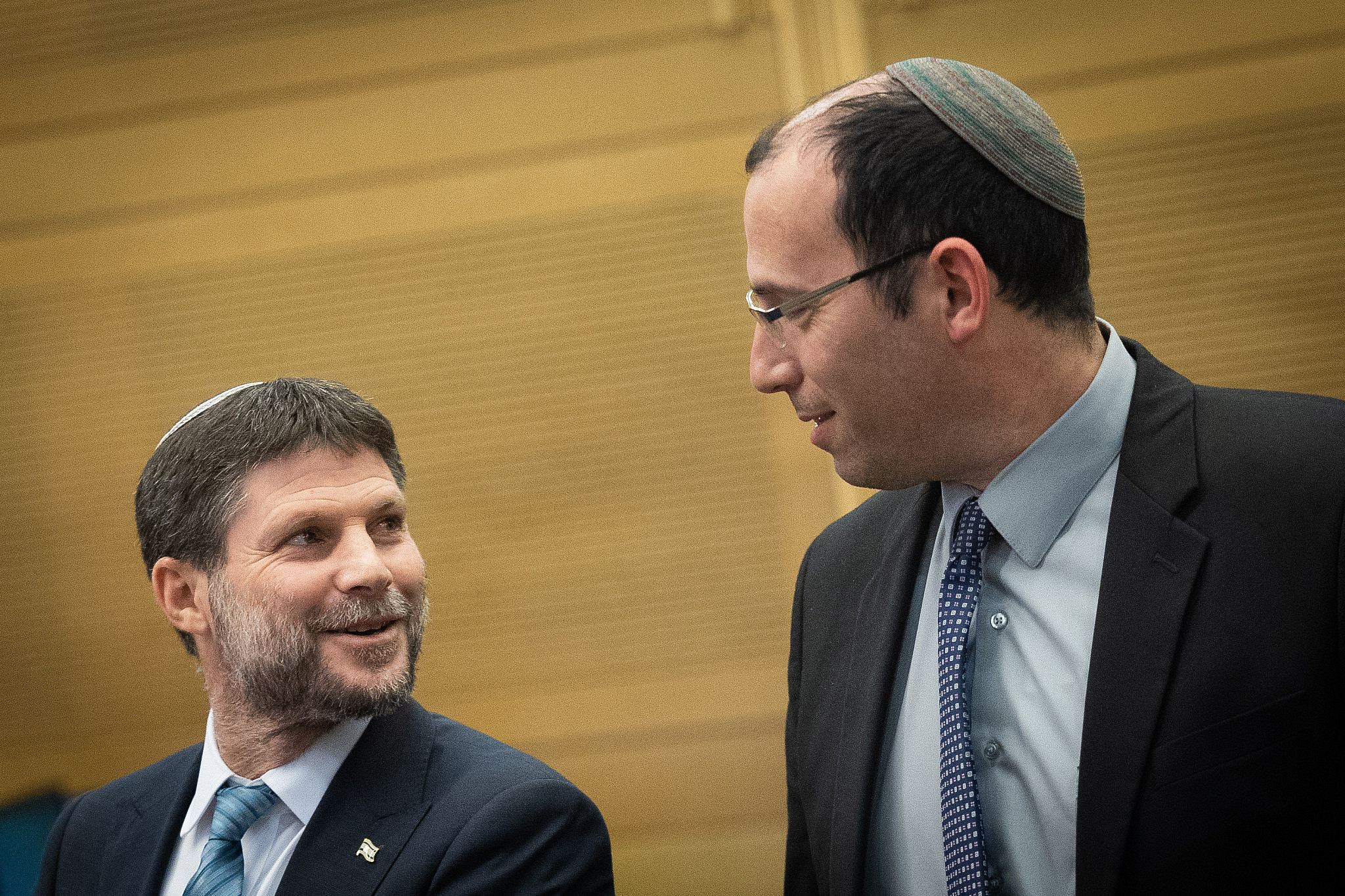
Contrary to what its supporters may claim today, the reform is not about what Rothman would later call “fixing the plumbing.” Instead, it is an ambitious overhaul that was designed, first and foremost, to anchor apartheid in the occupied territories and enshrine Jewish religious and national supremacy inside Israel.
It is precisely because the judicial overhaul is largely a project of the settlement movement — Rothman lives in an illegal outpost in Gush Etzion, and Smotrich in Kedumim in the northern West Bank — that it should come as a surprise that Makor Rishon, the newspaper most identified with the settler right, came out in favor of a complete freeze on the legal reform. “With consent or without consent, through talking or through silence, the reform needs to be shelved,” wrote Hagai Segal, the paper’s senior editor and until recently its editor-in-chief. “We must shelve it immediately, and announce to the nation: we are stopping everything.”
Segal’s words were echoed by other Makor Rishon writers. His son, Amit Segal, one of the most influential journalists in the country, even went so far as to write that Netanyahu was “dragged” into the reform by Justice Minister Levin. Meanwhile, following the passage of the bill abolishing the reasonableness clause last month, the settler right has launched a love bombing campaign to try and bring together Israelis from opposing political camps for dialogue.
Taken altogether, it is clear that the judicial overhaul is in the midst of a public relations debacle — even within the Israeli hard right.
The Israeli elite in 2023
To be clear, the settler right has no reservations about the overhaul itself. As Hagai Segal wrote, while fighting the “tyranny of the High Court” is a necessity, “domestic harmony” is more important, so that the nation can turn to equally important tasks, such as “guarding Area C in Judea and Samaria [the West Bank] and maintaining meshilut [governance] inside the Green Line.” In other words, going ahead with the reform may actually interfere with the continuation of the occupation.
This is a key point. The trauma of the 2005 Gaza disengagement for the settlement movement went beyond the removal of 9,000 settlers and the dismantling of their colonies; the wound that never healed, in their eyes, is the idea that the settlement movement was left alone in the struggle over “Greater Israel.” The general public, including traditional right-wing Likud voters, was seen as not especially interested in this project.
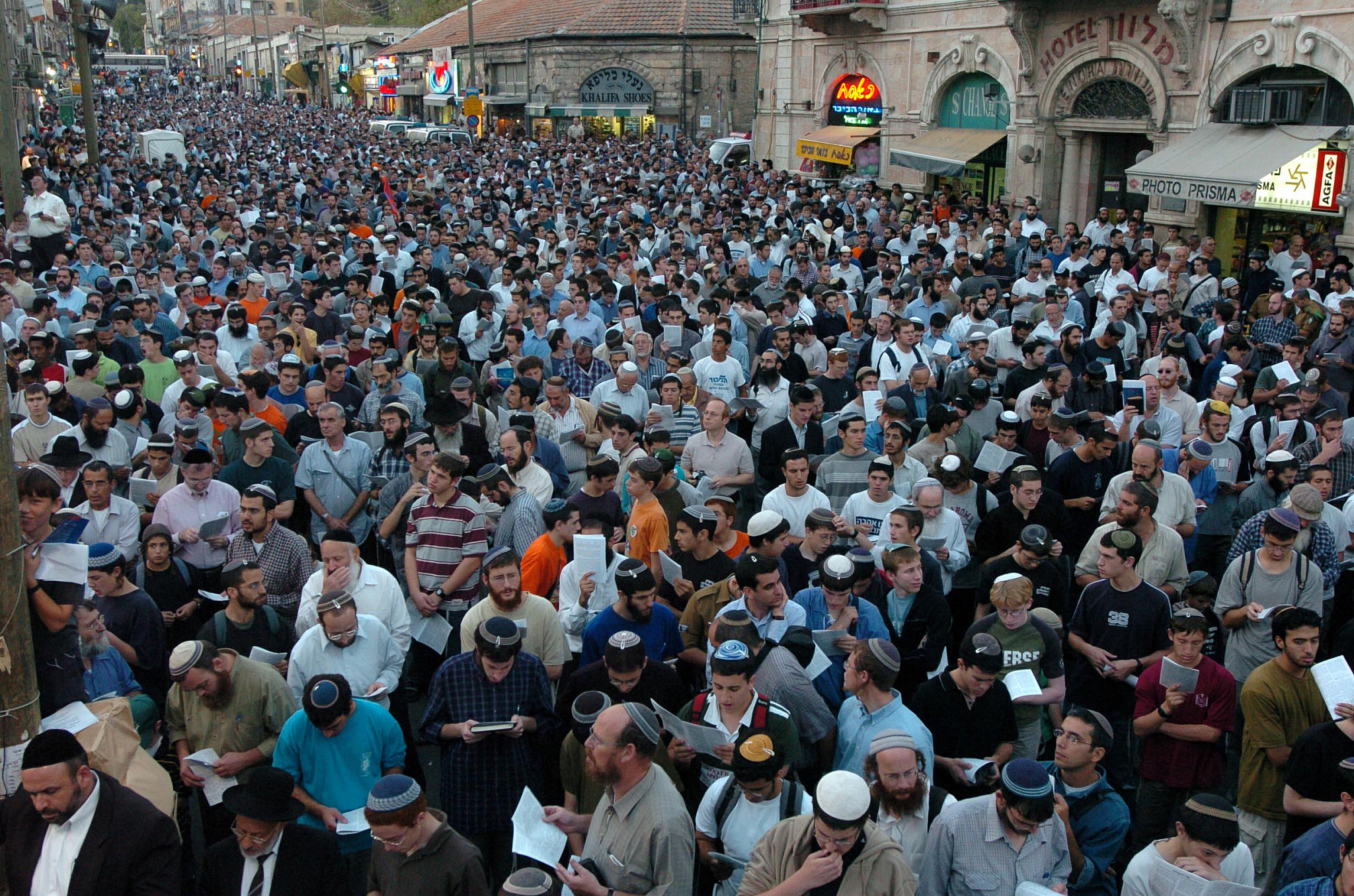
In fact, a majority of the Israeli public favored disengagement, as was expressed in the 2006 elections: the right-wing parties that were against the withdrawal from Gaza registered a historic low of 32 seats (including 12 seats for Avigdor Liberman’s Yisrael Beiteinu party, whose voters were not too involved in the struggle). Today, by comparison, Likud and the Religious Zionist Party have a combined 46 Knesset seats.
The lesson for the national-religious movement was that in order to maintain its enterprise in the occupied territories, it would have to break out of the West Bank and “settle in the hearts” of the Jewish public. This has been their main project for the past 15 years: to normalize the settlements, and to make the Green Line and the occupation invisible.
This move manifested itself in an ever-increasing presence of national-religious officers in the army; a very broad presence in the civil service at all levels (the current civil service commissioner and state comptroller, the former attorney general, and the former police commissioner all hail from the national-religious sector, and this is only the tip of the iceberg); massive entry into the media landscape; and the establishment of a network of right-wing think tanks, the best known of which is the Kohelet Forum, an architect of the overhaul.
In fact, if there is a homogenous group that can be seen as the Israeli elite in 2023, it is the settlers and the national-religious. Seven of the 33 ministers in the government come from this sector, plus two non-religious ministers who live in the West Bank. Their hegemony is also evident in the public discourse: today it is impossible to see words such as “occupation,” “West Bank,” or even “hitnahlut” [the common Hebrew term for settlements in the occupied territories] in mainstream media outlets in Israel.
But it is precisely the judicial overhaul, which settlers conceived for their nationalist-religious needs, and which was supposed to bring them to the peak of their power, that threatens to destroy what they’ve been able to achieve since the Gaza disengagement.
What started off in January as polite demonstrations by Israel’s upper-middle class has morphed into a rebellion — not only against the overhaul and the current government, but against the entire right-wing regime, and against the theo-ethnocratic nationalism at its foundation.
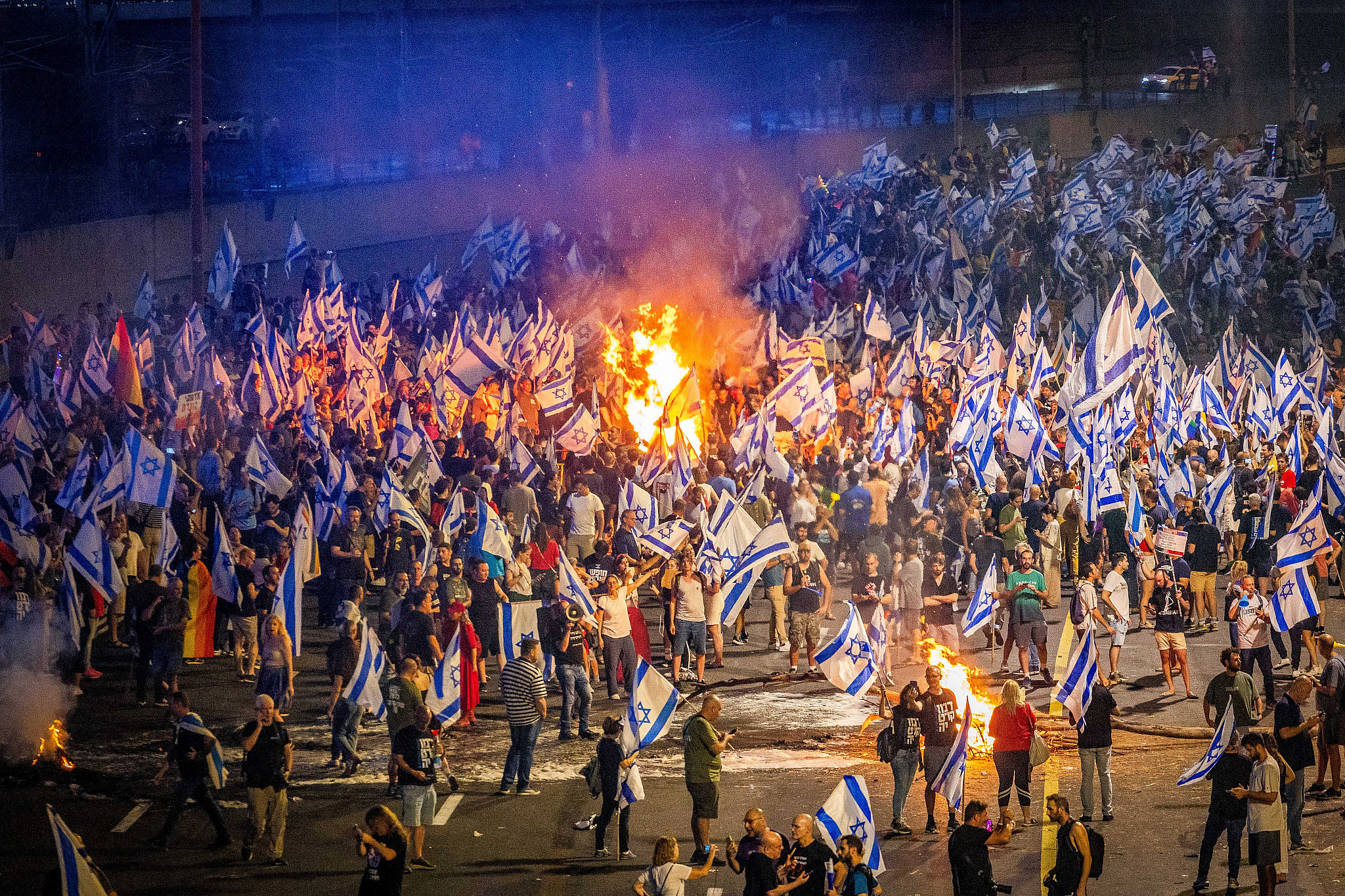
Faced with this rebellion, the settlement movement is in a particularly vulnerable situation. The Haredi parties, which have been full partners in the overhaul, can still call for correcting course, and dream of a place in a potential future government headed by Benny Gantz. Likud, too, can fantasize about a national unity government, particularly if Netanyahu can sign a plea bargain over his corruption cases. The national-religious have gone so far to the fascist right that if the current government falls, they will fall with it.
Breaking taboos
It is difficult for the national-religious to connect with the anti-elite discourse that we hear coming from certain wings of the Likud in order to discredit the protesters. If the pilots and the tech workers are labeled “privileged Ashkenazim,” how will they label the religious Zionists, whose leadership is distinctly Ashkenazi, who actually enjoy privileges that no other group in Israeli society does, and who have been an integral part of the government since the state’s founding?
But more importantly: the settlers have unwittingly created a direct connection between the brazen violence against Palestinians in the West Bank and the judicial coup. The pogrom in Huwara, followed by Smotrich’s call to wipe out the town, were a watershed moment in the way the protest movement related to the extreme right. Chants of “where were you in Huwara?” directed at police officers have become part of protests’ repertoire, including among those who previously never gave much thought to the occupation.
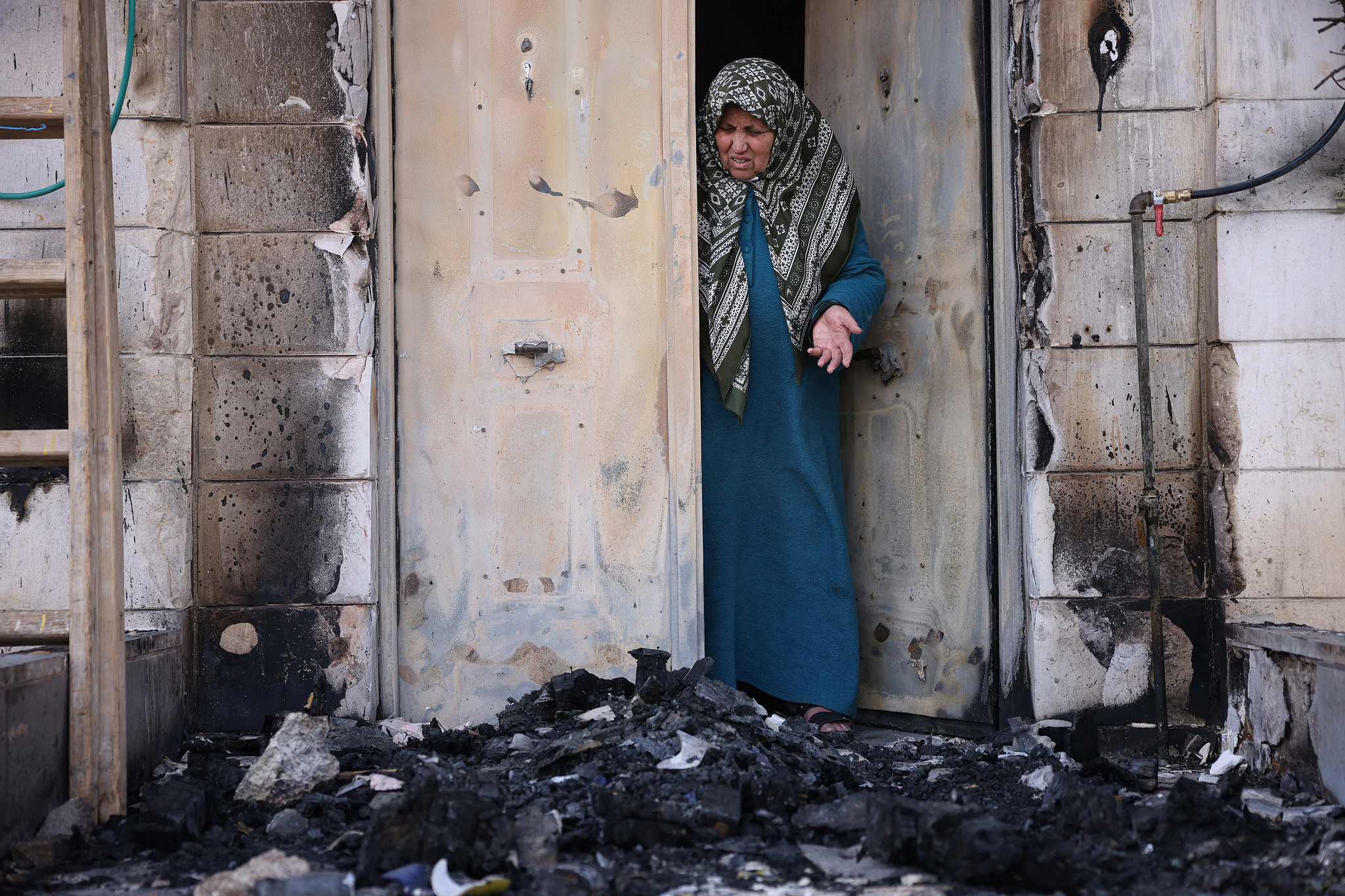
The pogroms that followed have only strengthened this connection. Today, it is difficult to find a single speaker who takes the stage at the Tel Aviv protests and does not make a connection between the judicial overhaul, pogroms in the West Bank, and Jewish supremacy — a connection that was until recently drawn exclusively by the radical left. The veil with which religious Zionism sought to hide the reality of the occupation, and the oppression of Palestinians, has been torn off.
As the protests continue to challenge the right’s rule, and as far-right politicians began openly supporting settler violence, the right has itself become the object of the protesters’ anger. The killing by settlers of Qosai Jammal Mi’tan, a Palestinian from the village of Burqa earlier this month, brought this connection to a climax. “Falanges of fascist Jews imbued with a false sense of superiority carry out pogroms in Arab villages,” said Shikma Bressler, the protest movement’s de facto leader, on stage in Tel Aviv. “Murderous militias in the service of the government that is leading us to destruction.”
Brothers in Arms, an organization of IDF reservists against the judicial overhaul, some of whose members attacked activists from the anti-occupation bloc last month, called the pogromists in Burqa the “military arm of Otzma Yehudit — a body that should be declared a terrorist organization.” Brig. Gen. Ilan Paz, the former head of the Civil Administration, the military body that oversees day-to-day life in the West Bank, asked when the day would come that he would plead for mass refusal to serve in the occupied territories.
And although Hagai Segal wrote his article before the killing in Burqa, he and others in the national-religious camp realize that the protest movement is not only much stronger than they first realized, but that it is willing to break taboos that no one imagined could be broken, such as conscientious objection. In their eyes, the continuation of the judicial overhaul means the continuation of the protests. And the continuation of the protests may further erode the willingness of many in Israeli society to continue financing the settlement project and risking their lives to defend it. Therefore, it is better to postpone the reforms until an unknown date.
Most read on +972
Of course, the settlers are far from weak. Smotrich is strengthening his control in the West Bank, settler violence is expelling Palestinian communities, and the chance that Mi’tan’s killers will face trial is low. It also does not mean that we will see a consensus, from Gantz to Bressler, to remove the settlements or a recognition that the overhaul’s ultimate goal is to preserve occupation and apartheid, both of which need to be dismantled in order to establish a real democracy between the river and the sea. But it is possible at this point to say that the settler movement can no longer “settle in the hearts” of the Israeli mainstream.
This article was originally published in Hebrew on Local Call. Read it here.


